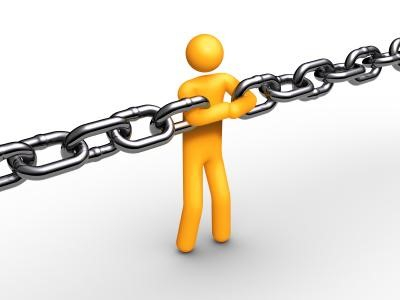
 Data Structure
Data Structure Networking
Networking RDBMS
RDBMS Operating System
Operating System Java
Java MS Excel
MS Excel iOS
iOS HTML
HTML CSS
CSS Android
Android Python
Python C Programming
C Programming C++
C++ C#
C# MongoDB
MongoDB MySQL
MySQL Javascript
Javascript PHP
PHP
- Selected Reading
- UPSC IAS Exams Notes
- Developer's Best Practices
- Questions and Answers
- Effective Resume Writing
- HR Interview Questions
- Computer Glossary
- Who is Who
Theory of Constraints: Overview and its Uses

Organizations have realized that the field of project management provides tried-and-true approaches and instruments to help them complete their tasks and reach their goals more effectively and successfully.
Because it covers such a wide range of topics, project management really uses and incorporates different management philosophies. The theory of limitations is one of these concepts. The principle of constraints can be useful in regulating almost any project.
The Theory of Constraints
According to the notion of limitations, certain restrictions prevent any management or production system from accomplishing more of its objectives. The theory of constraints employs five focusing steps to identify the limitation and then modify it so that it isn't a bottleneck any longer. There is always at least one constraint or limiting factor that results in trouble and the Theory of constraints is exactly what helps counter it.
Eliyahu Goldratt created the theory of constraints (TOC) in 1984 and introduced it to managers through his book "The Goal." Consider it to be similar to the proverb "A chain is only as strong as its weakest link." Finding that link and reducing its susceptibility is the goal of the theory of constraints.
The Elements of Theory of Constraints
The factors that make up the TOC process are as follows:
Constraints:
A constraint or hindrance that reduces a system's productivity
Five Steps to Focusing
Managers can identify limitations and enhance systems by
employing focused procedures.
Thinking Techniques:
Thinking is a problem-solving method that can be used to
enhance restrictions and remove blocks.
Input/Output Accounting:
An accounting technique that emphasizes the business's
throughput
Once we've gone through the fundamentals of the TOC idea, we'll examine each of these in more detail.
Key Assumption for the Theory of Constraints
The core tenet of the theory of limitations is that an organization may be managed by tracking these three things:
Throughput: The speed at which the system produces ?target units' (or cash) through sales.
Operational Expense: Cash used to produce ?target units.'
Investment: Every dollar that is put into the system (inventory, machinery, etc.).
But there are prerequisites that must be satisfied before any objective may be attained. These are typically things like safety, quality, legal requirements, and so on. Making money is the primary objective of for-profit corporations, but nonprofit organizations, for those making money is a secondary objective, can also apply the theory of limits.
Positive Aspects of the Theory of Constraints
ToC's primary objective is to optimize productivity by rationalizing management and production processes. But that's not all; a proper TOC implementation will also provide the following advantages:
Decrease in operational costs
Bigger returns on investments and profits
Larger capacity
Higher throughput rate
What Do You Mean by Constraint?
It is essential to comprehend what a constraint is in order to recognize and remove it. Any restriction that prevents you from completing your objective is a constraint, and constraints can manifest themselves in a number of different ways. ToC contends that your project or system will be affected by at least one constraint in a period of time.
Constraints: External & Internal
Internal constraints, like when the market expects more from you than you can deliver, or external constraints, like when you produce more than the market would accept, are both examples of constraints. With the latter, the company must concentrate on finding ways to increase demand for its good or service.
Equipment is one type of internal limitation, in a way that once employed, prevents you from producing more. Another internal barrier is people, which can be seen in personnel shortages, behavioral problems, and skill gaps. Finally, policy?written or unwritten?can impede your ability to increase production or your service offerings.
Always keep in mind that a limitation is a constraint. Therefore, even if it involves tools, personnel, or rules, a problem that arises in a project or organization is not necessarily a constraint. Even if nothing else is wrong, a limitation is anything that keeps you from achieving higher throughput.
What Are the Five Focusing Steps?
Finding the limiting factor is the apparent approach if at least one limitation is preventing a project from succeeding. Even if all restrictions are lifted, the project can still fail. There are always additional dangers and restrictions at work. But if restrictions can be lifted, the road to achievement becomes much smoother.
Constraints can be discovered and consequently dealt with using the focusing method. The five concentrating steps give ToC a project management roadmap to handle the constraint after it has been identified.
Determine the limitation
Finding the weak link in the chain is the first step to strengthening it.
Utilize the resources
Utilize the resources at hand to quickly improve.
Take decisions wisely
Ensure that the resolution of the limitation is aligned with all other process actions.
Reduce the restraint
Consider other options to address the issue, such as adding resources, if it persists.
Repeat as necessary
This ToC is an ongoing process, thus it's important to be on the lookout for constraints at all times.
To ensure that there are constant improvements and that those efforts are focused on the project limits, TOC uses these five concentrating phases.
How does the Project Manager Aid the Theory of Constraints Implementation?

The notion of limits is one more sub-project, among many others, that you will have to oversee when managing a project. It is, in a sense, a project with the goal of enhancing productivity, but it is organized exactly like any other project that operates, is planned, and is carried out. Award-winning software like ProjectManager groups tasks, teams, and projects to increase your project management efficiency.
How Lean Manufacturing Works with the Theory of Constraints?
Lean manufacturing and TOC are techniques to increase the efficiency of your project. However, they use a spectrum of strategies to achieve their goals.
Lean manufacturing is more concerned with eliminating waste from the process and cutting costs, whereas the theory of constraints focuses on identifying and removing constraints that restrict project throughput with the primary goal of boosting throughput rate and production capacity.
Concentrate on What Matters
Due to limited resources, for instance, not every restriction is worthwhile addressing. Therefore the idea of constraints can help you prioritize while lean manufacturing provides tools and procedures to make improvements.
Lean project management technologies, such as value stream mapping, which involves teams in problem-solving, and Gemba, which promotes comprehension of real-world situations, can also assist in identifying the limiting factor. The ToC constraint can be utilized, subordinated, and evaluated with the aid of lean project management technologies.
Conclusion
Not only is it natural to divide work into smaller projects or chunks, but doing so also makes the work easier to manage and carry out. To manage projects successfully, you must use every tool in your arsenal, which is why project management is so crucial.
One such instrument that helps increase project management efficiency is the Theory of Constraints (TOC). The Theory of Constraints is commonly utilized in manufacturing, but it may be successfully employed on practically any project. The theory of constraints helps organizations identify the limiting factor that occurs in their way of achieving goals. Moreover, it provides a system to improve the constraint so that it no longer remains a constraining or limiting factor.

